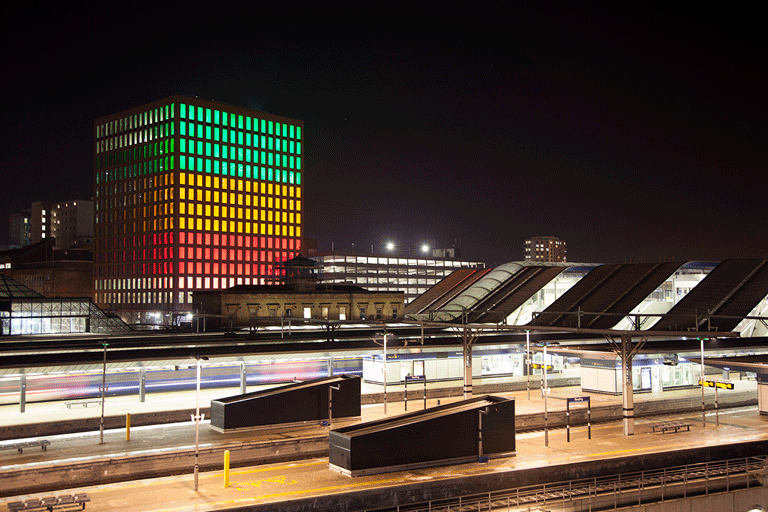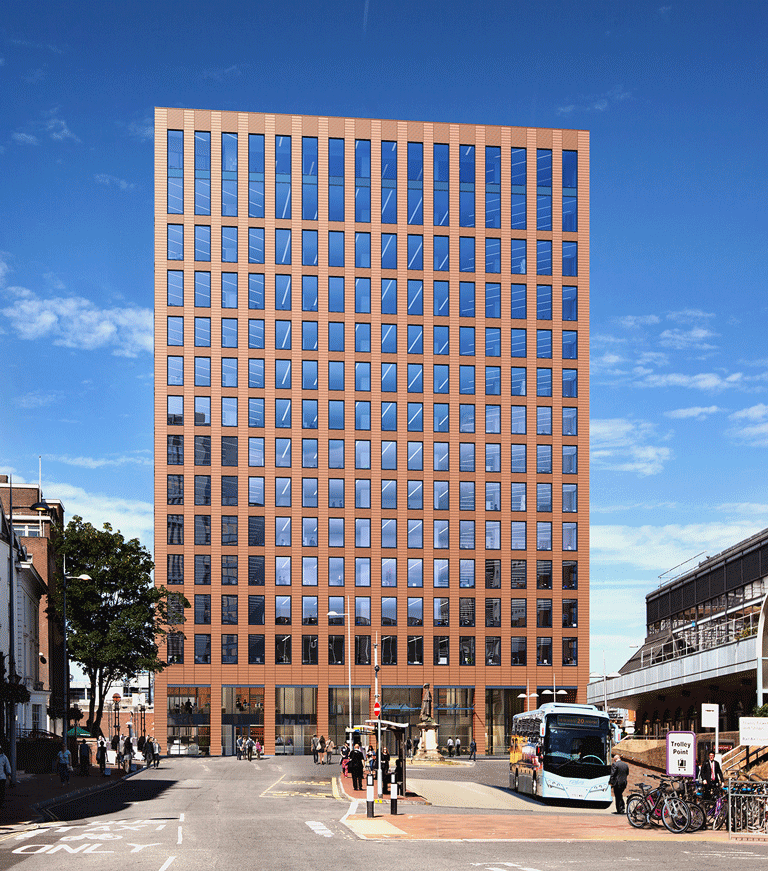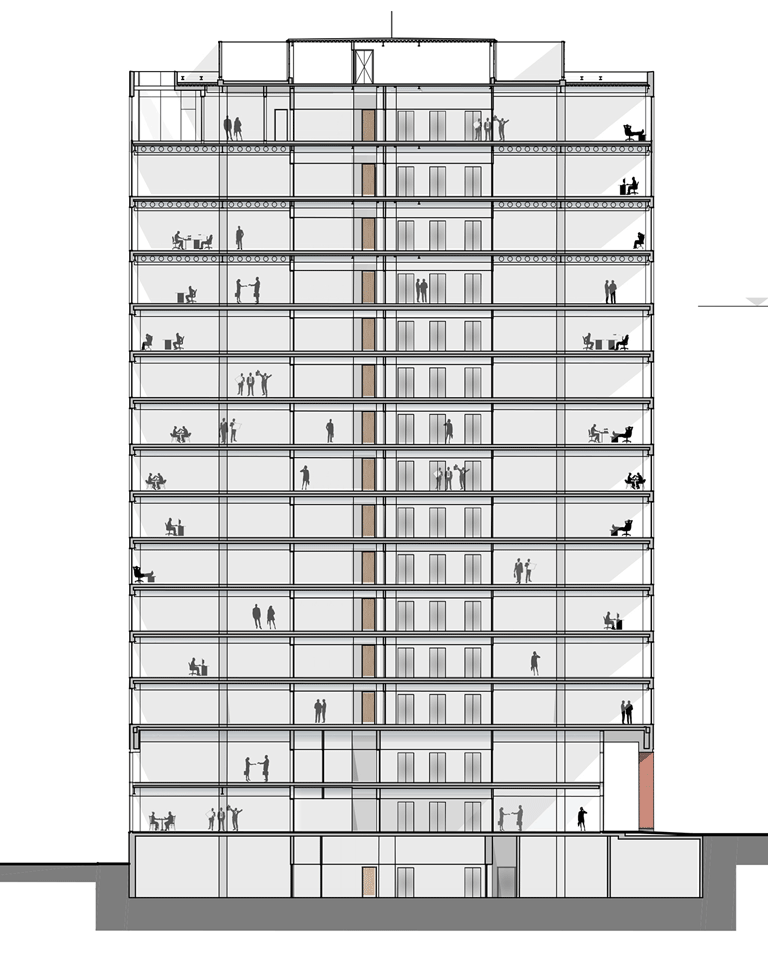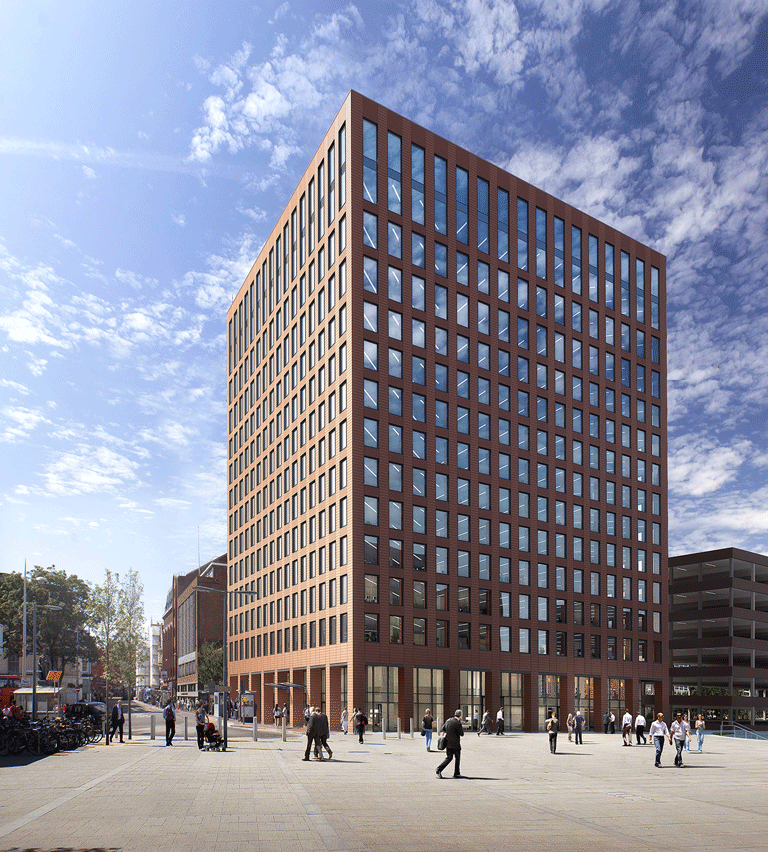How Readings Thames Tower was made fit for the 21st Century. Redeveloping a prominent building in the centre of Reading came with the further challenge of adding four floors. The Construction Manager Magazine spoke with dn-a founding director and arhcitect Jai Sanghera to find out more.
Describe the project
The thrust of the £44m project was to redevelop and reinvigorate an outdated 1980s office block into a contemporary mixed-use work place for the 21st century.
Hence the key objective was to entice high-calibre forward-thinking companies looking for premises in an urban and vibrant location rich in amenities.
The design concept was inspired by the Guaranty Building – the first modern skyscraper designed by Louis Sullivan in Buffalo, New York – that is of very similar proportions to Thames Tower.
Various options were considered, including full demolition. The solution eventually chosen was to strip back to the frame and add four new steel-framed office floors, making it a more sustainable option.
What did the works entail?
The works included stripping the building back to its structural frame, the removal of the existing concrete upstand panels to all elevations and the screed on the existing floors to help lighten the frame.
Stiffening plates and brackets were installed at level 11, and a series of additional perimeter support beams were connected to the external edge of the existing columns, which all helped to reinforce the structure.
The building has been reclad with a new terracotta tiling system to mirror the red brick buildings in the town centre.
The four corners of the building were also altered to create a now perfectly square structure. This was achieved by installing a new steel column to each of the building’s corners with secondary infill framing. These triangular corner infills were subsequently metal decked and concreted throughout the full height of the building.
What was the biggest challenge?
Working within a tight site with the boundary line being critical as on the north and south elevations it coincided with the existing facade line. So early discussions were arranged with the cladding subcontractor.
Logistics and working with the various cranes on the project were also a challenge. Before the new four storeys at the top of the building could be built, the existing concrete frame had to be strengthened as it was decided that a tower crane was needed. But to get the tower crane on the roof, another 500-tonne mobile crane was needed.



